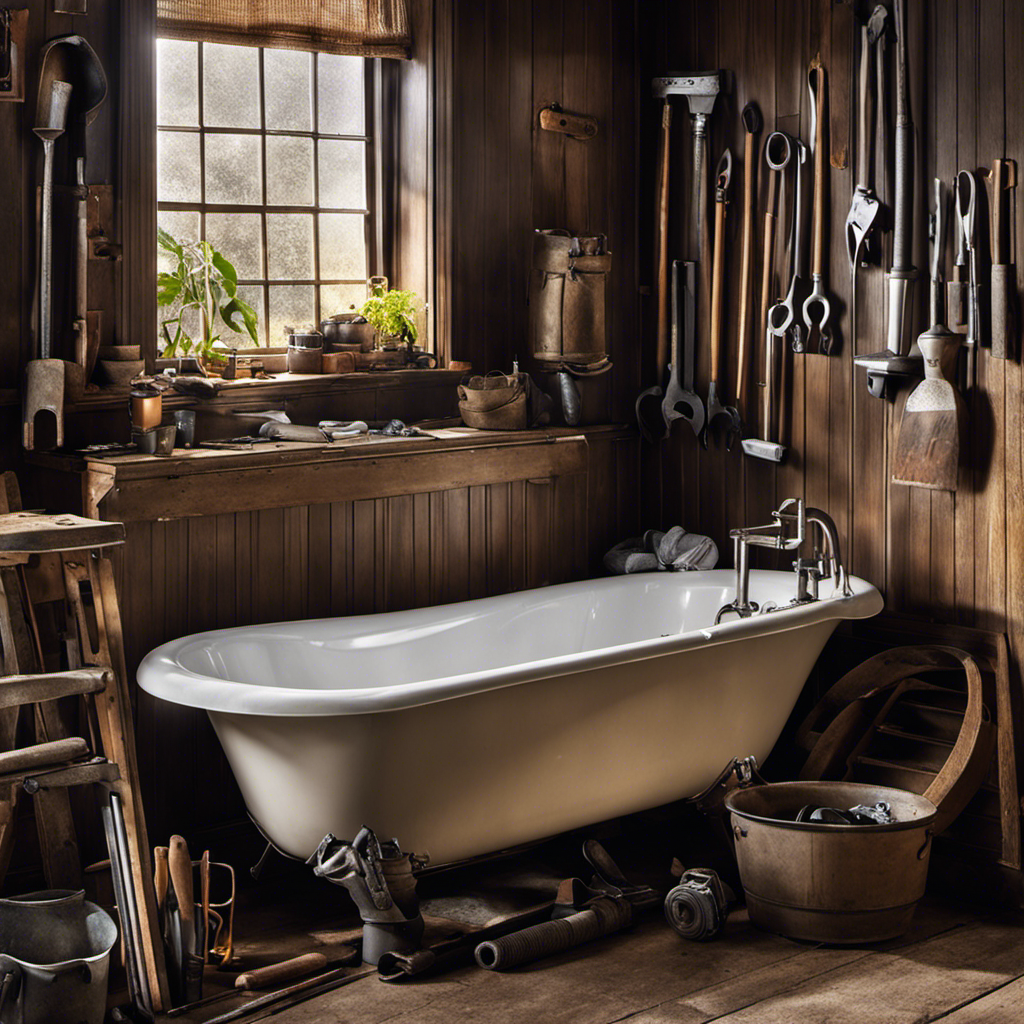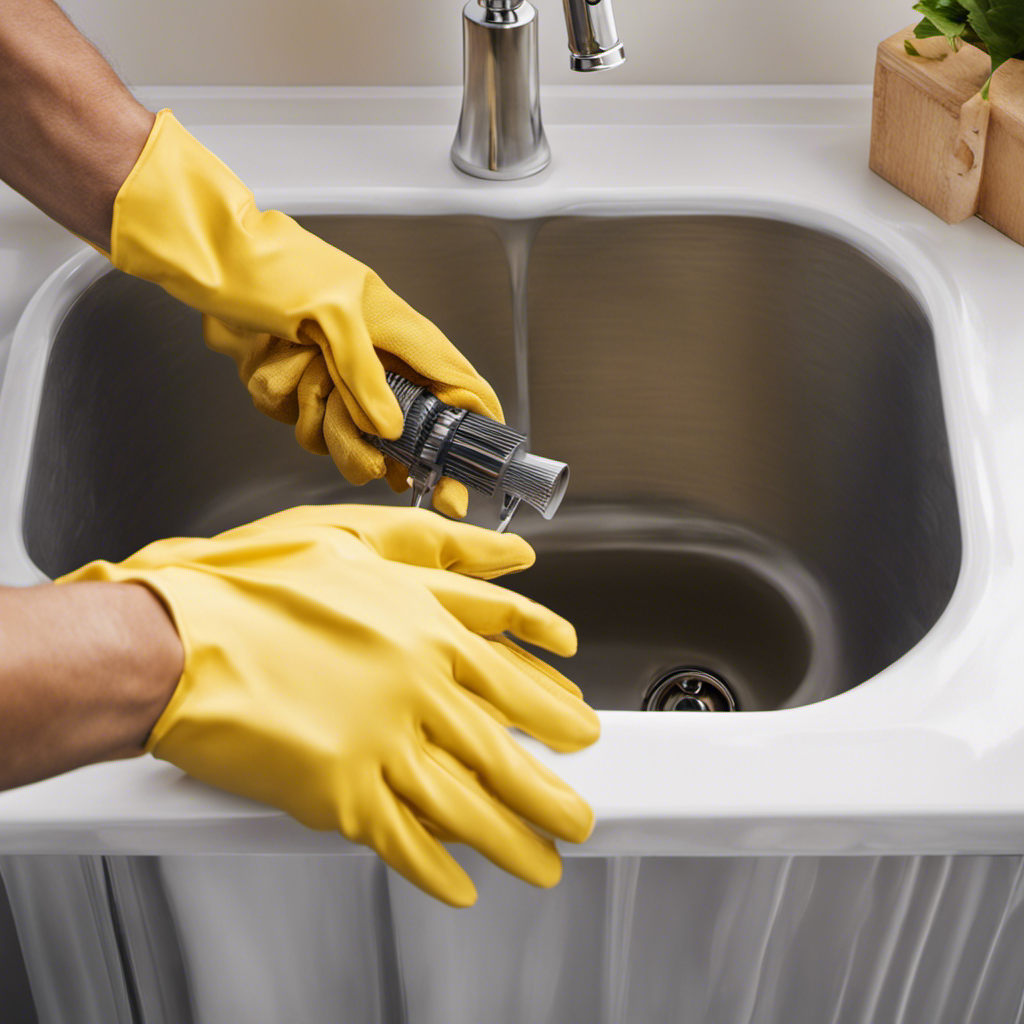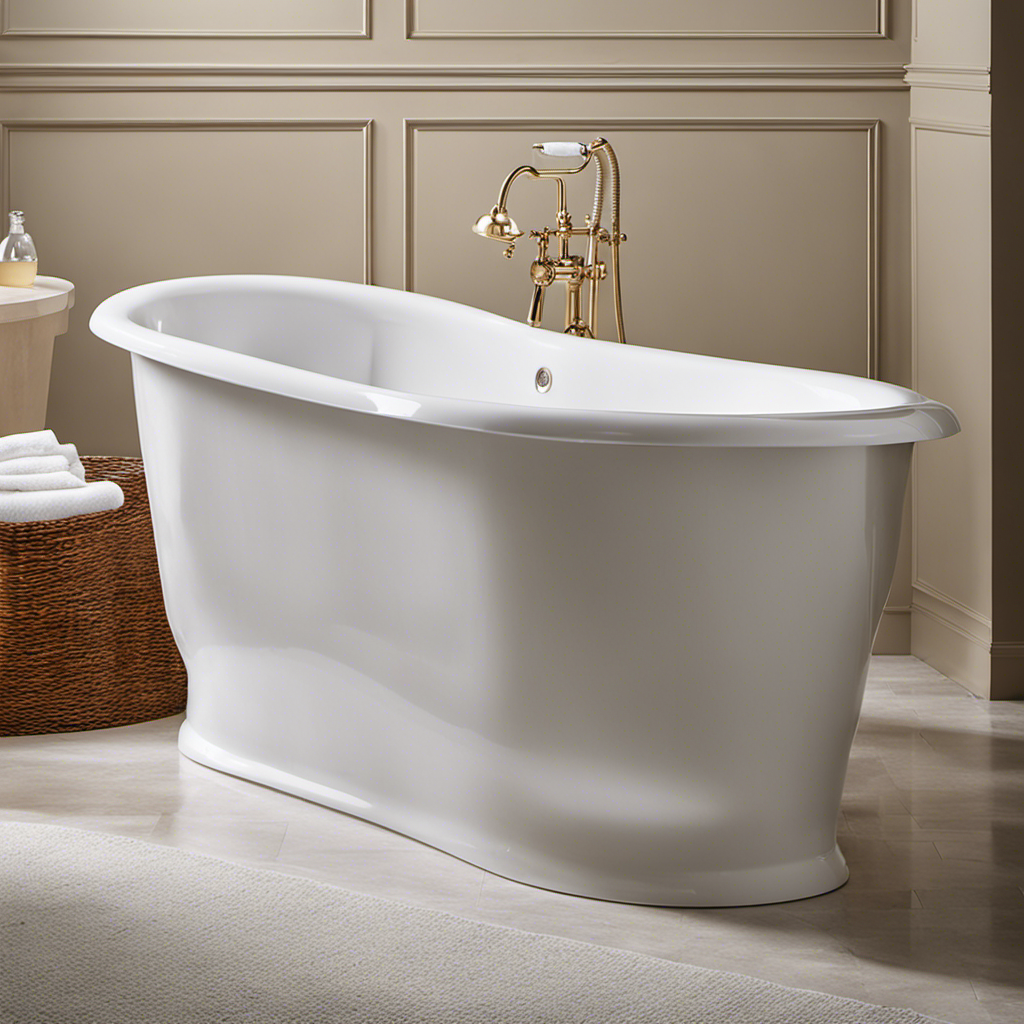Replacing a bathtub may seem like a daunting task, but with the right knowledge and tools, it can be a manageable project. Did you know that the average bathtub replacement takes around 6-8 hours?
In this article, I will guide you through the step-by-step process of:
- Evaluating your bathtub
- Gathering the necessary tools
- Removing the old bathtub
- Installing the new one
- Finishing touches
By following these precise instructions, you can successfully replace your bathtub and transform your bathroom.
Key Takeaways
- Evaluating the condition of your bathtub is important to determine whether it needs repair or replacement.
- Gathering the necessary tools and materials, such as measuring the dimensions and choosing the right material, is crucial for a successful bathtub replacement.
- Removing the old bathtub can be done through techniques like cutting, dismantling, and disconnecting plumbing connections.
- Installing the new bathtub requires proper waterproofing methods and following the instructions for installation.
Evaluating the Condition of Your Bathtub
Before you start the process, make sure you’re evaluating the condition of your bathtub. Determining bathtub repair options is crucial in deciding whether to replace or repair it.
There are several signs of bathtub damage that you should look out for. Firstly, check for any visible cracks or chips in the surface. These can indicate structural damage and may require professional repair or replacement.
Additionally, pay attention to any leaks or water stains around the tub. This could suggest plumbing issues or a deteriorating sealant that needs attention.
Scratches or discoloration may be cosmetic concerns, but they can also be signs of underlying damage.
Lastly, if your bathtub is outdated or no longer meets your needs, it may be time for a replacement.
Gathering the Necessary Tools and Materials
To gather all the necessary tools and materials, you’ll need to make a trip to the hardware store.
When choosing the right bathtub for your replacement project, it’s important to consider several factors.
First, measure the dimensions of your bathroom to ensure the new bathtub will fit properly.
Next, determine the type of material you prefer, such as acrylic, cast iron, or fiberglass.
Consider the style and design that will complement your existing bathroom decor.
Additionally, don’t forget about safety precautions during installation.
It’s crucial to follow all manufacturer instructions and guidelines to prevent any accidents or damage.
Make sure to wear protective gear, such as gloves and goggles, when handling tools or toxic chemicals.
Now that we have all the necessary tools and materials, we can move on to removing the old bathtub.
Removing the Old Bathtub
Once you’ve gathered all the necessary tools and materials, it’s time to start removing the old bathtub. Before getting started, it’s important to understand the different bathtub removal techniques available. While it is possible to remove a bathtub yourself, it can be a challenging and time-consuming task. Hiring a professional for bathtub removal ensures that the job is done efficiently and correctly. Professionals have the expertise and experience to handle any unexpected issues that may arise during the process. Below is a table outlining some common bathtub removal techniques:
| Technique | Description |
|---|---|
| Cutting | Cutting the bathtub into smaller pieces for easier removal. |
| Dismantling | Disassembling the bathtub component by component. |
| Plumbing Disconnect | Disconnecting the plumbing connections before removing the bathtub. |
| Structural Support | Ensuring that the surrounding structure is supported during removal. |
Transitioning into the next section, installing the new bathtub requires careful planning and precise execution.
Installing the New Bathtub
Installing a new bathtub can be a straightforward process if you follow the proper steps and have the necessary tools.
One important aspect to consider during installation is the use of waterproofing methods. Before installing the new bathtub, it is crucial to ensure that the surrounding area is properly waterproofed to prevent any potential water damage. This can be done by applying a waterproof membrane or sealant to the walls and floor around the bathtub.
Additionally, it is important to consider the different types of bathtub materials available. Common materials include acrylic, fiberglass, cast iron, and porcelain. Each material has its own advantages and considerations, such as durability, ease of maintenance, and cost.
Finishing Touches and Cleanup
Don’t forget to wipe down the surrounding area and clean up any debris after finishing the installation.
It’s important to leave the bathroom looking clean and tidy.
To ensure a thorough cleanup, I recommend using appropriate cleaning products for the bathtub material.
For acrylic tubs, a mild non-abrasive cleaner is usually sufficient.
For porcelain or ceramic tubs, a gentle abrasive cleaner can be used.
Be sure to follow the manufacturer’s instructions for any cleaning products you choose to use.
After cleaning, it’s also important to seal the edges of the bathtub to prevent water damage.
A silicone caulk is commonly used for this purpose.
Apply a thin and even bead of caulk along the edges, smoothing it out with a caulk smoothing tool or your finger.
Allow the caulk to dry completely before using the bathtub.
Frequently Asked Questions
How Much Does It Cost to Replace a Bathtub?
Replacing a bathtub can vary in cost depending on various factors such as the type of replacement options available, the materials used, and any additional plumbing or installation requirements.
Can I Replace a Bathtub by Myself or Do I Need to Hire a Professional?
Replacing a bathtub can be a DIY project for beginners with the right bathtub replacement tips. However, hiring a professional has its pros and cons. It’s important to weigh the cost, time, and expertise required.
How Long Does It Typically Take to Replace a Bathtub?
Replacing a bathtub typically takes several hours, depending on the complexity of the project and the skill level of the person doing it. Proper bathtub replacement techniques and materials are essential for a successful installation.
Are There Any Specific Building Codes or Regulations I Need to Adhere to When Replacing a Bathtub?
When replacing a bathtub, it’s important to adhere to building codes and regulations. This includes obtaining any necessary building permits and ensuring that the plumbing requirements are met.
What Are Some Common Mistakes to Avoid When Replacing a Bathtub?
When replacing a bathtub, it’s crucial to avoid common mistakes. For example, not properly measuring the space can lead to a mismatched fit. Here are some tips and tricks to ensure a successful replacement.
Conclusion
Replacing a bathtub can be a challenging task, but with the right tools and materials, anyone can do it. By evaluating the condition of your bathtub and carefully removing the old one, you can ensure a smooth installation of the new bathtub.
The finishing touches and cleanup are essential to create a polished look.
Just like replacing a bathtub, life often requires us to make difficult changes. It may be hard, but with determination and the right approach, we can overcome any challenge and emerge stronger than before.










